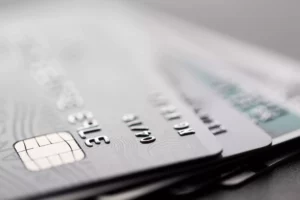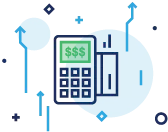Deciding to accept credit cards is a no-brainer when you have a business, but do you need a credit card authorization form? It’s true that most Americans have at least one credit card, but there are more decisions a business owner must make than taking credit cards as a form of payment. Among these decisions are choosing the type of payment terminals you’ll use, deciding if you’ll integrate with a shopping cart on your eCommerce site, and choosing chargeback protection software. Another decision you’ll have to make is whether or not to use a credit card authorization form. It’s imperative you find out more about what the credit card authorization is, what types of charges the authorization form works for, and look at CCA form templates to determine whether it’s right for your business. Let’s get started!
What is a Credit Card Authorization Form?
A credit card authorization form is a tool that processes purchases in situations where a cardholder doesn’t have their physical credit card. This helps a person who may not have their credit card present at the time they make a purchase. This authorization form essentially substitutes the credit card to allow the transaction to proceed.

Using the credit card authorization form, a seller is able to pull the relevant information from the cardholder immediately. Then the seller can store the credit card authorization to make current and future purchases faster.
Basically, a credit card authorization form is used as proof the cardholder has the funds to cover the transaction that they are about to make. That’s why the cardholder has filled in the details needed to verify the funds. This is the first step to getting approval for the purchases.
When you think about a purchase at a retail store, the buyer uses their credit card by swiping or dipping into the machine. This swipe or dip is when the details of the card and transaction are transmitted instantly. When using the authorization form, it captures the details which are then sent to the company that processes the transactions.
The Types of Charges Authorization Forms Work With
If you’re accepting credit cards for your services you might need to have a credit card authorization form. There are many different situations why you might need to use the credit card form for processing a transaction. Some of the scenarios where you might need this credit card authorization include:
The cardholder isn’t physically present for the transaction
You are using the authorization form for credit card billing that will happen later
The customer’s credit card is not charged when this information is collected. The cardholder’s account will instead show a pending status.
When a credit card form is used in these cases, it’s called an “authorization only” transaction. Car rental companies and hotels will typically use these types of transactions. If there is an initial charge, it is usually adjusted and taken off. Another scenario that could happen is a customer has put an item on hold that isn’t in stock.
Recurring or ongoing payments
Known as “card on file” transactions, this occurs when the cardholder authorizes the business to charge them for recurring payments. For example, if you offer subscription-based services, you can charge the cardholder for the subscription. This option is much more convenient because it automates the transaction for both you and the customer.
Is Credit Card Authorization Required for Recurring Revenue?
As discussed above, one of the types of transactions that an authorization form is used for is recurring revenue. Using a credit card authorization form is one way to collect authorization for these ongoing payments. There are other ways you can get this authorization as well.
The important thing is that you follow best practices for handling card-not-present transactions and the guidelines set by Visa and Mastercard for accepting these transactions. For example, one way that a cardholder may authorize recurring transactions could be through email. This is an unconventional form of authorization, so you would need to keep the authorization on file for the entire time the payment is recurring.
Credit Card Forms Vs. Chargebacks

When a charge appears on the cardholder’s account, chargebacks allow them to dispute the charge and ask the issuer to reverse it. Chargebacks are intended to protect customers from unauthorized transactions. Unfortunately, there has been a rise in what’s called, “friendly fraud” where a cardholder will dispute a charge that is actually legitimate.
Businesses can use a credit card authorization form to protect themselves against these chargebacks. That’s because you have a document that’s signed by the cardholder indicating that they gave you permission to charge their card for your services. This increases your chances of winning your case with the card issuer.
Other reasons chargebacks occur
There are a number of reasons why a chargeback could occur. Since customers initiate chargebacks, you can take steps to minimize some of these reasons, while you have less control over others. Customers most often initiate chargebacks if they:
- Are unhappy with the product or service
- Never received the product
- Did not want to deal with returning the item
- Did not know how to return the item
- Do not remember making the purchase or does not recognize the company name on their statement
Thankfully, there are chargeback management tools at your disposal to reduce the risk of these frustrating charges.
How to Offer an Authorization Form
To start using credit card authorization forms, you simply need to make it part of your payment process. For the types of transactions that require an authorization form, incorporate it at the beginning of your checkout process. Be sure to explain to the customer the purpose of the form. This step could actually help avoid some chargebacks. Finally, you will need to keep a record of the authorization form that is PCI compliant.
Where to Find Credit Card Authorization Form Templates
You can find templates for authorization forms all over the Internet. There are templates specifically for card on file, authorization-only, and other types of charges. Your merchant service provider may have some credit card authorization form templates that you can use. In fact, you can even create your own. At the very least, all you need on your authorization form template is:
- Cardholder’s card information, including card type, name on card, card number, and expiration date
- Your business information
- Cardholder’s billing address
- Verbiage that states cardholder is authorizing your business to charge their card
- Name and signature of the cardholder
- Date of signature
Should Your Business Utilize Credit Card Authorization Forms?
There are certainly benefits of using credit card forms for many types of businesses. Subscription-based services, online retailers, and travel businesses are among those, who by design, should use credit card authorization forms. Ultimately, the decision of whether to use these forms comes down to whether you want to offer card-not-present payment options to your customers and are willing to accept some of the risks. The world of payments is changing and your customers expect new ways to pay for your good or services. Therefore, consider the value credit card authorization forms can add to your business.






